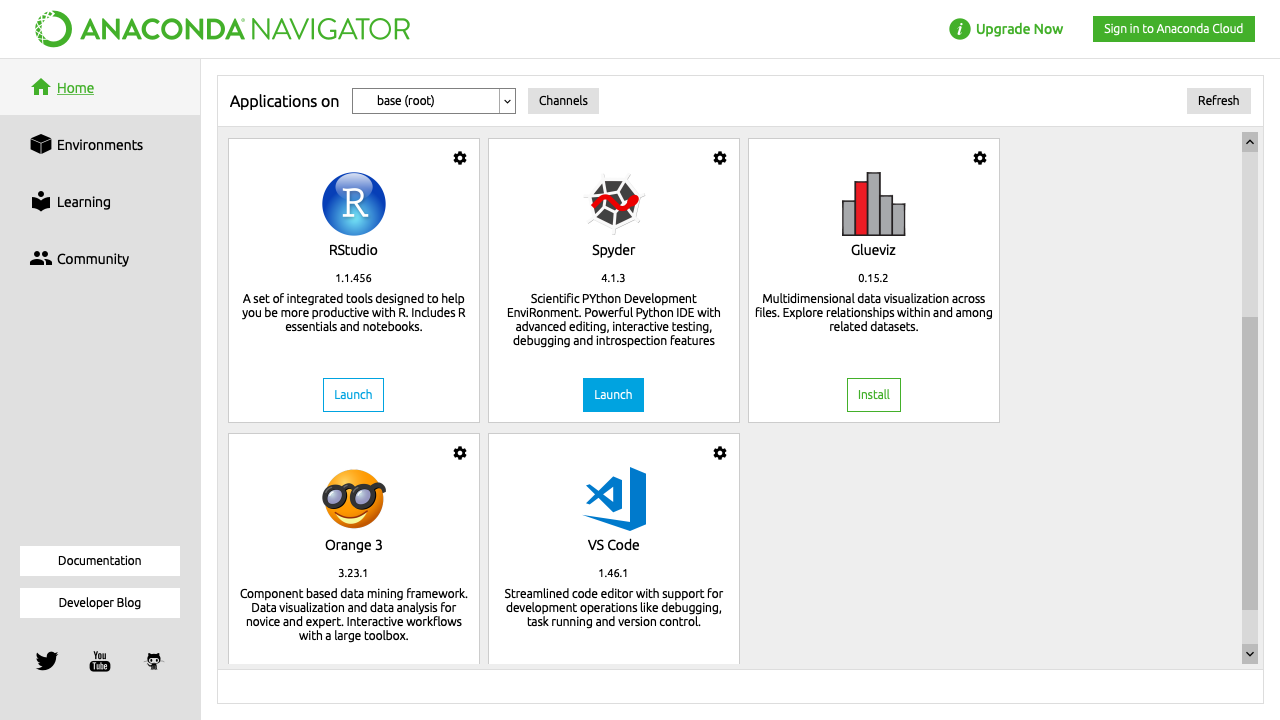
UPDATE ANACONDA INSTALL
I could install Jupyter Notebook separately, but then I have to manager that outside of Anaconda too. Please do not recommend something like "ditch Anaconda and just use RStudio for all your R work", because that doesn't allow easy integration with Jupyter Notebook and the conda package manager inside Anaconda.
UPDATE ANACONDA UPDATE
The Anaconda Navigator's conda package index will likely not reflect the changes that RStudio makes.īefore I make a likely irreversible and breaking change to Anaconda, can anyone recommend a better way to do this Rstudio update and have Anaconda's package index correctly reflect changes that RStudio will make with executables and packages that it updates and installs? RStudio doesn't use Anaconda Navigator's conda program to do the upgrade. It looks like to get a good RStudio update, I must update RStudio from within RStudio, but this will likely break a lot of Anaconda R functionality. Plus, Anaconda makes a lot of choices without always asking the user about where to put things. My judgement is that R and RStudio are basically UNIX programs that have been ported to Windows, and have all kinds of "leftover" Unix-izms and quirks in the way they reference files, directories, and scripts. Also, Anaconda put my R-dedicated virtual environment (which I named Rdev') and installed R in a wierd place too: C:\Users\nda\envs\Rdev\Lib\R\bin`. Anaconda Navigator package manager doesn't give me an option to install any later versions. I want to use the current RStudio release. If I check the Rstudio website current RStudio download, it says the latest version is RStudio-.exe. The version of R Studio that is bundled with the latest release of the Anaconda distribution is over a year old, specifically version rstudio-1.1.456. My delivery vehicle to the end user must be Jupyter Notebook or JupyterLab with Python and R kernels installed by Anaconda Navigator. This is a different issue than what was posted by someone else on this forum.
UPDATE ANACONDA UPGRADE
See Build Python apps in Azure Pipelines.This is cross-posted from # How best to update / upgrade RStudio inside or underneath Anaconda Navigator?. How can I run my tests with multiple versions of Python? You must use the call command to resume running your script after activating. Why is my script on Windows stopping after it activates the environment? If you forget to pass -yes, conda will stop and wait for user interaction. Why does my build stop responding on a conda create or conda install step? On Hosted macOS, the agent user doesn't have ownership of the directory where Miniconda is installed.įor a fix, see the "Hosted macOS" tab under Add conda to your system path. Python -m pytest -junitxml=junit/unit-test.xmlįAQs Why am I getting a "Permission denied" error? When the list of repositories appears, select your Anaconda sample repository.Īzure Pipelines will analyze the code in your repository and detect an existing azure-pipelines.yml file.Ī new run is started. You might be redirected to GitHub to sign in. Walk through the steps of the wizard by first selecting GitHub as the location of your source code. Then choose the action to create a new pipeline. In your project, navigate to the Pipelines page. Sign in to your Azure DevOps organization and navigate to your project. To get started, fork this repo to your GitHub account. The code in the following repository is a simple Python app.

Get startedįollow these instructions to set up a pipeline for a sample Python app with Anaconda environment.

Anaconda is a Python distribution for data science and machine learning.
UPDATE ANACONDA HOW TO
Learn how to set up and use Anaconda with Python in your pipeline.


 0 kommentar(er)
0 kommentar(er)
